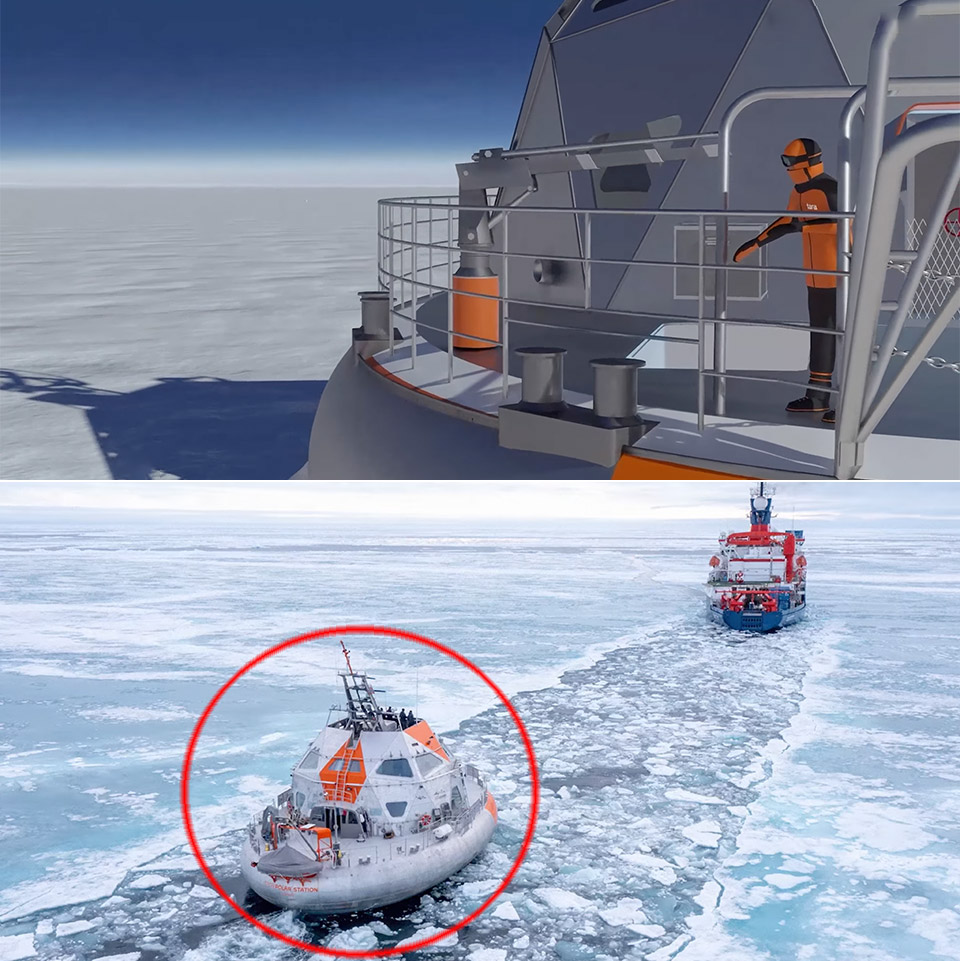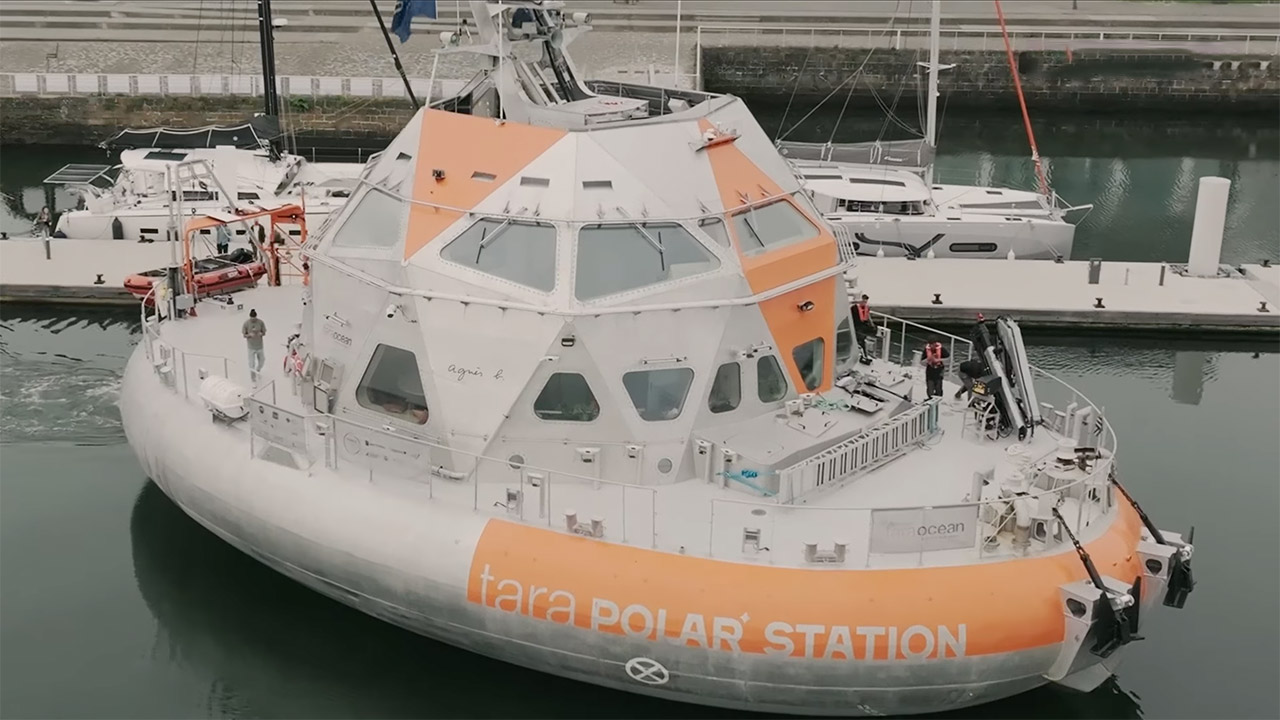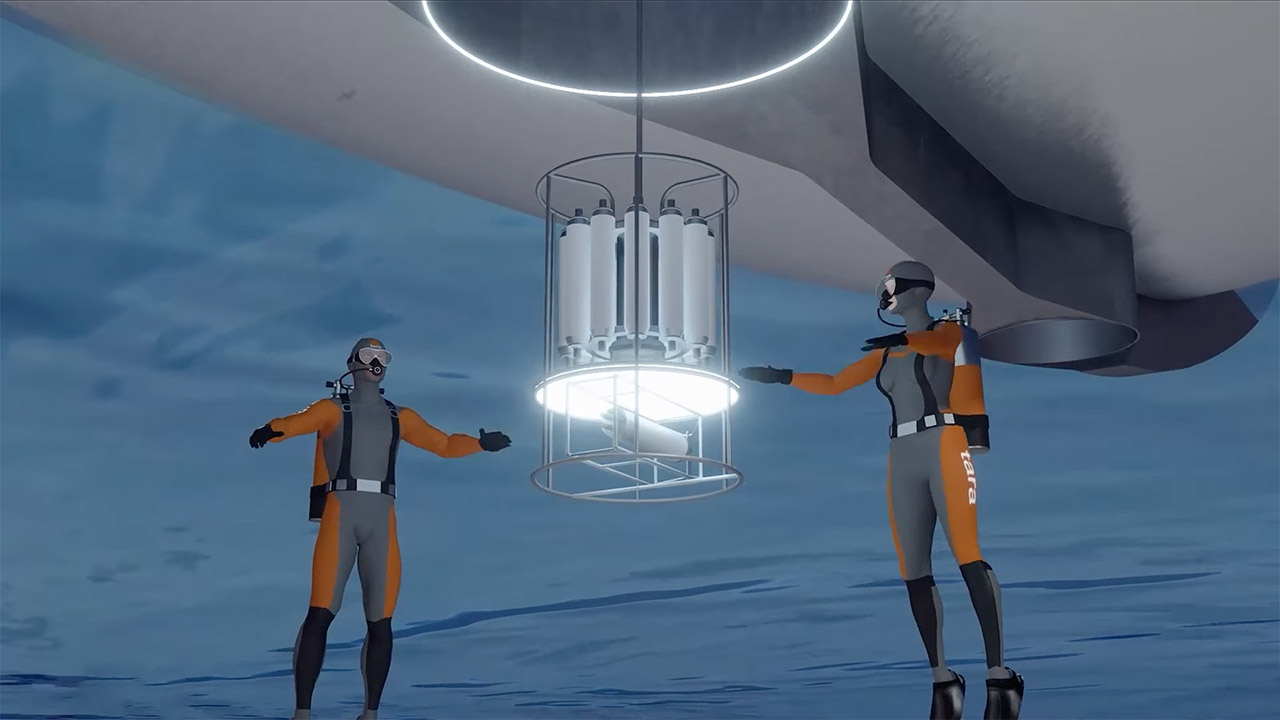
A spaceship-like vessel glides silently through the Arctic’s icy heart but it’s just the Tara Polar Station, a floating laboratory that will spend the next 20 years to discover the Arctic Ocean’s secrets. Built to withstand temperatures as low as -52°C and the crushing pressure of shifting sea ice, this platform will change how we study one of Earth’s most isolated and critical ecosystems.
Built over 18 months at the Constructions Mécaniques de Normandie shipyard in Cherbourg, France, the station launched in April 2025 and marks a new era in polar exploration. Unlike typical research vessels that visit the Arctic for a few summer weeks, this station is designed for endurance—14-month drifts locked in the ice pack, starting with its first mission, Tara Polaris I, in September 2026. Designed by architect Olivier Petit and naval engineering firm MAURIC, its oblong, ice-resistant hull, 20 mm thick and reinforced to meet Bureau Veritas’ ICE CLASS 1A SUPER standards, takes the Arctic’s brutal conditions in its stride while drifting with the transpolar current. A central moonpool—a 1.6-meter well leading to a wet lab—allows scientists to access the ocean beneath the ice, deploying divers and instruments without battling the frozen surface.

LEGO ONE Piece The Going Merry Pirate Ship Building Blocks – Pretend Play Adventure Toy for Boys & Girls,…
- ICONIC STRAW HAT PIRATE SHIP – Builders ages 10 and up set sail for ocean adventures with the LEGO ONE PIECE The Going Merry Pirate Ship (75639)
- ALL FIVE ORIGINAL CREW MEMBERS – Kids stage pretend play showdowns with the included Monkey D. Luffy, Roronoa Zoro, Nami, Usopp, and Sanji…
- DETAILED INTERIOR SPACES –The Going Merry features a crew’s cabin, kitchen, storage areas, and Usopp’s workshop, plus ram figurehead with cannon,…
Around the moonpool, the layout can accommodate 18 people in summer (sailors, scientists, artists, journalists) and down to 12 in winter to save resources. Insulation, staircases, cables and pipes are carefully arranged to use the space and keep everything running in the dark of the polar night. The mast is the hub for antennas and radars, communication in the middle of nowhere. With 500 days of autonomy, the station is self-sufficient far from resupply, with all systems redundant for the unexpected.

Over 20 years, its 10 expeditions will track changes across seasons, from summer’s endless daylight to the six-month polar night. An international team including the CNRS, University of Maine and Université Laval will study topics like phytoplankton in ice and warm Atlantic water upwelling.

The Tara Polar Station also has a lab on board for real time experiments, a first for Arctic research. Oceanographer Benjamin Rabe wants to know if warm nutrient rich water from the Fram Strait flows to the central Arctic and fuels phytoplankton blooms. This will help climate models for 2050 and Arctic governance. By repeating observations along the same paths over 20 years the station will build a unique dataset, tracking yearly and long term changes.
[Source]